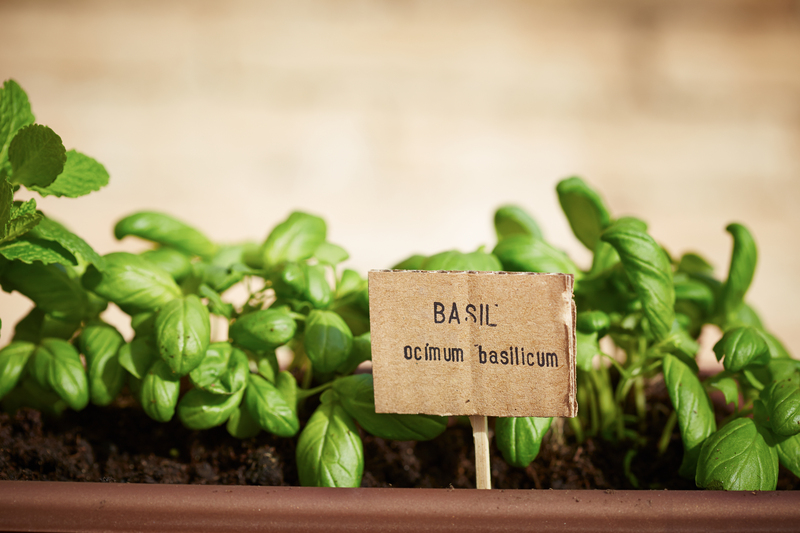Embarking on Transformation: First Steps for a Garden Makeover
Posted on 13/09/2025
Embarking on Transformation: First Steps for a Garden Makeover
Thinking about giving your outdoor space a fresh start? A garden makeover can be a life-affirming journey, reinvigorating not just your landscape, but also your connection to nature, your home, and even yourself. Before you start planting or building, it's important to lay strong foundations. In this comprehensive guide, we'll detail the essential first steps for a garden renovation, explore inspiring makeover ideas, and provide actionable tips for both novice and seasoned gardeners. Let's get started on the path to transforming your garden!
Why Transform Your Garden in the First Place?
Your garden is a living extension of your home--an evolving reflection of your personality and lifestyle. Garden transformation goes beyond mere aesthetics; it can improve your well-being, increase property value, support biodiversity, and foster a deeper connection with the seasons. Whether you dream of a tranquil retreat, a productive edible yard, or a vibrant haven for pollinators, the first steps for a garden makeover set the tone for all the magic to come.
- Boosts curb appeal and property value
- Creates a space tailored to your lifestyle
- Supports local wildlife and promotes sustainability
- Improves outdoor living and mental health

Assessing Your Starting Point: The Foundation of Every Garden Makeover
1. Observe and Analyze Your Space
Before grabbing your trowel, take time to study your garden. Walk around your space at different times of day, noting how sunlight moves, where water pools, and which plants thrive or struggle.
- Sunlight: Which areas get full sun, partial shade, or deep shade?
- Soil quality: Is it sandy, clayey, or loam? Are there drainage issues?
- Structures & Hardscapes: What existing elements--shed, paths, fences--might stay or go?
- Wildlife activity: Which birds or pollinators frequent your garden?
2. Define Your Garden Goals
A clear vision will guide every decision you make. Do you want a low-maintenance oasis, a productive vegetable patch, or a stunning flower border? List your priorities and must-haves for your garden renovation.
- Relaxation: Consider seating, shade, and privacy options.
- Entertaining: Is there space for gatherings, a fire pit, or a dining area?
- Gardening passion: Are you interested in growing edibles, flowers, or trees?
- Wildlife habitat: Do you want to attract bees, butterflies, or birds?
Planning Your Garden Makeover: Turning Dreams Into Reality
1. Draw a Base Map
Create a simple sketch of your garden, including boundaries, permanent structures, trees, and key views. You don't need to be an artist--clarity is what matters. This base map will help you visualize changes and allocate zones.
2. Take Inventory & Declutter
Assess existing plants and features. Decide what's worth keeping, moving, or removing. Old sheds, overgrown shrubs, or broken paving may need to go before any new elements are introduced.
- Keep: Healthy, beloved plants or useful garden features.
- Remove: Unhealthy, invasive, or unwanted plants.
- Repurpose: Upcycle old bricks, timbers, or even containers for new uses.
3. Research and Gather Inspiration
Browse garden magazines, visit local gardens, or explore Instagram and Pinterest for ideas. Look for combinations of plants, colors, textures, and garden styles that resonate with your taste.
- Cottage gardens: Informal, colorful, bursting with blooms.
- Modern landscapes: Geometric shapes, minimalism, strong lines.
- Wildlife-friendly gardens: Native plants, wildflower meadows, water features.
- Edible gardens: Raised beds, fruit trees, herbs and vegetables.
Essential Practical Considerations
1. Soil Testing and Preparation
Healthy soil is the root of a successful garden transformation. Investing time here pays off in every stage that follows.
- Test your soil: Kits from garden centers reveal pH and basic nutrient levels.
- Add organic matter: Compost, aged manure, or mulch improve structure and fertility.
- Address drainage issues: Raised beds, French drains, or re-contouring can help.
2. Budgeting & Phasing
Define an initial budget, allowing for must-have investments (like fencing or irrigation) and phasing other wishlist items over seasons or years.
- List materials and estimated costs
- Get quotes for any professional work (fencing, hardscapes)
- Prioritize: Tackle structural work and soil improvements first
Designing for Success: Layout and Structure
1. Zoning Your Garden
Break your garden into functional zones based on your vision and site analysis. For example:
- Relaxation area: Deck, patio, seating, shade
- Productive plot: Vegetables, herbs, compost
- Feature beds: Borders, pollinator patches, statement shrubs
- Paths and transitions: Paving, gravel, stepping stones
2. Hardscaping: The Garden's Backbone
Hardscapes--like patios, walls, paths, and decks--provide structure and shape for planting. Decide early on where you need structural changes: level lawn, replace fencing, or add new paths.
- Patios & Decking: Choose materials that complement your home and climate
- Paths: Guide movement and create rhythm; mix materials for interest
- Retaining walls: Manage slopes and define spaces
- Screening: Use fences, trellises, or hedges for privacy
Planting the Seeds of Change
1. Right Plant, Right Place
Match plants to your garden's unique conditions: sun, soil, space, and exposure. A well-planned garden makeover draws on diversity--using shrubs for structure, perennials for color, and annuals for seasonal flair.
- Native & drought-tolerant plants are low-maintenance and support local wildlife
- Succession planting ensures your garden looks good in every season
- Layer heights: Use groundcovers, mid-height plants, and vertical accents
2. Creating Year-Round Interest
Design for four seasons: evergreens for winter structure, bulbs for early spring, summer perennials, and fall foliage. Consider adding focal points such as bird baths, sculptures, or benches.
- Mix foliage textures and colors
- Include plants with interesting stems or seed heads for winter appeal
- Blend flowers, foliage, and fruit for dynamic displays
Preparing for a Sustainable Makeover
1. Embracing Eco-Friendly Practices
Modern garden transformations increasingly focus on sustainability. Choose environmentally friendly practices wherever possible.
- Reduce chemical use: Opt for organic fertilizers and pest control
- Harvest rainwater: Install butts on gutters to collect and reuse rainwater
- Compost garden and kitchen waste
- Create wildlife habitats: Bird boxes, log piles, pollinator plants
2. Upcycling and Recycling Materials
Reusing materials not only saves money, but adds character and lowers your garden's environmental footprint.
- Reclaimed bricks or slabs for paths and patios
- Old containers as planters
- Wooden pallets for compost bins or vertical gardens
Practical First Steps: From Dream to Reality
1. Clearing and Prepping the Site
Start with a clean slate. Remove weeds, dead plants, debris, and any hardscape that's being replaced. Where possible, rehome salvageable plants and materials.
2. Infrastructure First
Focus initially on the backbone of your garden makeover:
- Structural repairs: fix fences, sheds, or walls in disrepair
- Laying paths and patios: set the stage for later planting
- Drainage solutions: tackle these before importing plants or soil
3. Soil and Beds Preparation
Once structural work is finished, double-dig or mulch beds, amend soil as needed, and set up irrigation if required.
4. Initial Planting
Plant trees and large shrubs first (sometimes autumn is best for trees and hedges), so they anchor your design and establish before smaller plants fill in.
5. Mulch and Maintenance Plan
Mulch is your garden's friend--conserving moisture, reducing weeds, and adding a finished look. Set up a basic maintenance routine: watering, weeding, and daily enjoyment!
Common Mistakes and How to Avoid Them
- Skipping the planning phase: Rushed decisions can lead to costly changes later.
- Ignoring soil and drainage: Unhealthy plants and poor growth often start below ground.
- Overplanting or underplanting: Aim for balance and give plants room to mature.
- Failing to budget: Stretch your makeover with phased implementation.
Inspiration: Mini Makeover Ideas
- Wildlife corner: Add a small pond, wildflower patch, or log pile for mini-beasts.
- Edible edge: Tuck herbs, strawberries, or dwarf fruit along borders.
- Color blast: Create a bold annual flower bed for instant impact.
- Zen nook: Install a bamboo screen, gravel, and a bench for quiet reflection.

Maintaining Momentum: Enjoying the Journey
Remember, a garden transformation is a journey, not a rushed project. Gardens change, mature, and respond to your care over time. Celebrate progress, learn from challenges, and enjoy watching your outdoor haven evolve.
Conclusion: Your Garden Makeover Awaits
Embarking on a garden makeover is brimming with promise. The first steps--observation, planning, clearing, and foundational work--lay the groundwork for stunning, long-lasting results. By understanding your space and your goals, investing in soil and structure, and nurturing plants suited to your environment, you'll transform your garden into a personal paradise. Whether you're planning major changes or starting small, the rewards of an outdoor transformation will bring joy, beauty, and life to your home for years to come.
Ready to begin your journey of garden transformation? Let today be the first step toward the outdoor sanctuary you've always envisioned!



